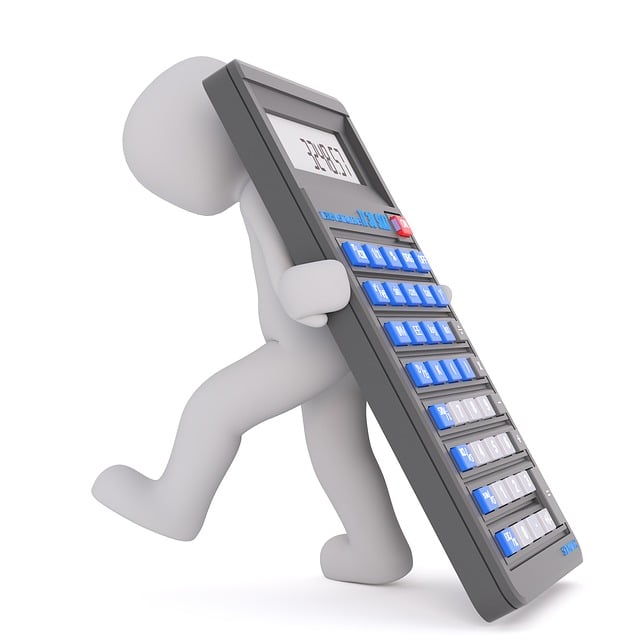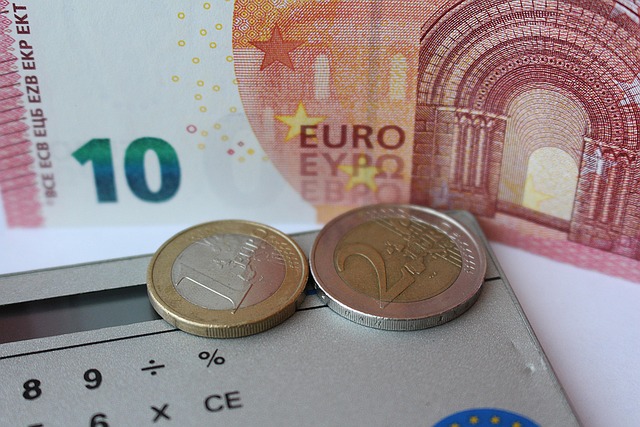How to Calculate Transaction Amount: Practical Steps and Examples
Author: Jameson Richman Expert
Published On: 2025-10-31
Prepared by Jameson Richman and our team of experts with over a decade of experience in cryptocurrency and digital asset analysis. Learn more about us.
Knowing how to calculate transaction amount is essential for anyone who pays, accepts, or trades money — from shoppers and freelancers to crypto traders and merchants. This guide explains the components of a transaction amount, step-by-step formulas, real-world examples (fiat and crypto), how fees and conversion rates affect totals, and practical tips to minimize costs. Use the methods below to compute gross amounts, net receipts, and total costs reliably, whether you're reconciling payments, preparing invoices, or planning a trade.

What is a Transaction Amount?
A transaction amount is the monetary value exchanged between parties for goods or services at a point in time. That value can be expressed as:
- Gross amount — the full charge before fees, taxes, or discounts.
- Net amount — the amount received after fees, taxes, and adjustments.
- Total cost to payer — the gross amount plus fees, taxes, shipping, and any currency conversion costs.
For clarity, consider a simple retail purchase: the sticker price is the gross amount; sales tax and card fees increase the buyer’s total cost; the merchant’s bank or payment processor may take fees, reducing the merchant’s net receipt.
Key Components That Affect Transaction Amount
Understanding how to calculate transaction amount means identifying the components that change the final numbers:
- Base price — item or service price you start with.
- Taxes — sales tax, VAT, GST, or other jurisdictional taxes.
- Payment processing fees — card networks, gateways, or merchant acquirers often charge a percentage plus a fixed fee (e.g., 2.9% + $0.30).
- Network/gas fees — in cryptocurrency, blockchain transaction fees (gas) apply.
- Exchange/conversion rates — trading between currencies introduces conversion costs and spread.
- Slippage — in crypto and forex, the execution price can differ from the quoted price, affecting the final amount.
- Rebates or rewards — cashbacks or fee rebates change net costs.
Basic Formulae for Calculating Transaction Amounts
Below are the most commonly used formulas you’ll need. Keep the formulas accessible — you can implement them in spreadsheets, apps, or backend systems.
1. Customer Total (Fiat)
When you want the total a buyer must pay:
Customer Total = Base Price + Taxes + Shipping + (Base Price × Payment Fee%) + Fixed Fee
Example: Base $100, sales tax 8% ($8), payment fee 2.9% + $0.30 =>
- Payment fee = 100 × 0.029 + 0.30 = $2.90 + $0.30 = $3.20
- Total = 100 + 8 + 3.20 = $111.20
2. Merchant Net Receipt
When a merchant wants to know what they actually receive:
Net Receipt = Gross Sale − (Gross Sale × Fee%) − Fixed Fee − Chargebacks − Refunds − Taxes Paid
Using the same $100 sale with 2.9% + $0.30:
- Net = 100 − 2.90 − 0.30 = $96.80 (before other adjustments)
3. Crypto Trade Total (Buy side)
When buying crypto you’ll pay price + exchange fees + network fee if withdrawing:
Total Cost (fiat) = Crypto Price × Quantity + (Crypto Price × Quantity × Exchange Fee%) + Network/Gas Fees + Conversion Spread
Example: Buy 0.5 BTC at $50,000 (per BTC), exchange taker fee 0.1%, withdrawal network fee 0.0005 BTC:
- Crypto cost = 50,000 × 0.5 = $25,000
- Exchange fee = 25,000 × 0.001 = $25
- Network fee = 0.0005 BTC × $50,000 = $25
- Total Cost = 25,000 + 25 + 25 = $25,050
4. Crypto Trade Net Received (Sell side)
Net Fiat = (Crypto × Sell Price) − (Crypto × Sell Price × Fee%) − Network Fee (if applicable)

Step-by-Step Guide: How to Calculate Transaction Amount for Common Scenarios
Scenario A — Selling a Product Online (merchant perspective)
- Start with the item’s price (Base Price).
- Add applicable taxes (calculate tax jurisdictions correctly).
- Add shipping or handling fees.
- Apply discounts or coupon amounts (deduct).
- Calculate payment processor fees: percentage of gross sale + fixed cents.
- Subtract processor fees, refunds, and chargebacks to obtain net receipt.
Example compute in sequence (spreadsheet-ready):
- Base: $150
- Discount: 10% => −$15 → Adjusted price: $135
- Sales tax 8% => +$10.80 → Subtotal: $145.80
- Shipping: +$5 → Total charged: $150.80
- Processor fee 2.9% + $0.30 => 150.80×0.029 + 0.30 ≈ $4.57 + $0.30 = $4.87
- Net to merchant = 150.80 − 4.87 = $145.93
Scenario B — Buying Crypto and Withdrawing to Wallet
- Decide crypto and quantity you want to buy.
- Find exchange price and order type (market vs limit affects slippage).
- Calculate exchange trading fee (maker/taker/margin).
- Calculate withdrawal network fee in crypto terms and convert to fiat for total cost comparison.
- If converting currencies, include conversion spread or forex fee.
Tip: exchanges list withdrawal fees; also check for potential dynamic gas fees (e.g., Ethereum) which can spike. For trading strategy and indicator use, learn to disable or configure cluttered indicators on charting tools properly — for a concise guide on turning off TradingView indicators see this quick practical guide.
(Reference: TradingView: Turn Off Indicators — Quick Practical Guide.)
Scenario C — Converting Between Cryptocurrencies (Cross-pair)
Conversion between crypto A and crypto B often happens through a quote in a base currency (e.g., BTC/USDT, ETH/BTC). Calculate as:
Output Crypto B = Input Crypto A × (Price A in USD / Price B in USD) × (1 − Exchange Fee%) − Network Fee (if withdrawal)
Example: Swap 5 ETH when ETH = $3,000 and ADA = $1.20, exchange fee 0.2%:
- Value of 5 ETH = $15,000
- Number of ADA before fee = 15,000 / 1.20 = 12,500 ADA
- Exchange fee = 12,500 × 0.002 = 25 ADA
- Net ADA received = 12,475 ADA (minus any withdrawal network fee)
Common Fee Structures and How They Change the Transaction Amount
Understanding fee structures helps you predict and manage costs. Most systems use one or a combination of these:
- Percentage fee — common for card and exchange trades (e.g., 0.1%–3%).
- Fixed fee — typical in card payments and micropayments (e.g., $0.30 per transaction).
- Tiered fee — fee decreases as volume increases (common on exchanges).
- Maker/taker model — maker fees are often lower than taker fees (exchanges such as Binance and Bybit use variations).
- Network fee — blockchain-specific; sometimes variable and dynamic.
- Spread — the difference between buy and sell price; trading platforms may build spread into prices.
For an in-depth look at how exchange fees work and strategies to minimize them, the Exchange Fees Mastery guide provides up-to-date techniques and examples relevant for 2025.
(Reference: Exchange Fees Mastery — 2025 Guide.)
How Currency Conversions Affect Transaction Amounts
When transactions cross currencies, do not forget:
- Spot exchange rate — market rate at execution.
- Conversion fee — percent or markup by bank/exchange.
- Cross-currency spread — difference between buy and sell FX rates.
- Intermediary routing — multi-hop conversions can add spread (e.g., A→USD→B).
Example: Buying BTC priced in USD using EUR: if BTC = $50,000 and EUR/USD rate = 1.10 (1 EUR = 1.10 USD), and your provider adds a 0.5% FX markup:
- Base cost in EUR = (50,000 / 1.10) = 45,454.55 EUR
- FX markup 0.5% = 227.27 EUR
- Total cost in EUR = 45,681.82 EUR

Practical Examples with Step-by-Step Calculations
Example 1: Freelance Invoice — How to Price So You Net a Target Amount
Suppose you need to net $1,000 after payment platform fees of 2.9% + $0.30 per transaction. What gross invoice amount should you bill?
Let G be gross amount. You want:
G − (0.029 × G) − 0.30 = 1,000
Solve for G:
G × (1 − 0.029) = 1,000 + 0.30 → G × 0.971 = 1,000.30 → G = 1,000.30 / 0.971 ≈ $1,030.50
Bill about $1,030.50 to net $1,000 after fees.
Example 2: Crypto Buy Order with Slippage and Gas
Buying 1000 USDT worth of an altcoin (ALTC) with price $0.10 per ALTC; market slippage 0.5%; exchange fee 0.2%; network withdrawal fee 1 ALTC (on-chain). Calculate ALTC you receive if you buy and immediately withdraw.
- Tokens before fees = 1000 / 0.10 = 10,000 ALTC
- Slippage 0.5% reduces tokens by 50 ALTC → 9,950 ALTC
- Exchange fee 0.2% on trade value = 10,000 × 0.002 = 20 ALTC → 9,930 ALTC
- Withdrawal network fee = 1 ALTC → Net received = 9,929 ALTC
Note: If the exchange charges network fee in fiat terms, convert appropriately.
Tools and Resources to Automate Calculations
Manual calculations are good for understanding, but automation reduces errors. Consider:
- Spreadsheets with formulas (Excel/Google Sheets) — create templates for gross/net calculations and include dynamic fee rates.
- Exchange APIs — fetch real-time prices, fees, and withdrawal fees programmatically.
- Payment provider dashboards — many show estimated net receipts for given transaction amounts.
- Fee calculators — some websites and wallets include built-in calculators for network fees (Ethereum gas calculators, Bitcoin fee estimators).
For traders interested in platform-specific features such as order types and indicator setups, learning to streamline your charting environment helps — this practical TradingView article explains quickly how to turn off unnecessary indicators so you can focus on concrete price action when calculating orders and required amounts.
(Reference: How to Turn Off TradingView Indicators.)
Special Considerations for Cryptocurrency Transactions
Crypto trading introduces extra variables:
- Volatility — price swings can change the USD-equivalent amount between order placement and settlement.
- Gas spikes — network congestion can cause sudden increases in gas fees (Ethereum, Polygon, etc.).
- Token-specific withdrawal fees — some tokens have dynamic fees or minimum withdrawal amounts.
- Layer-2 and cross-chain bridges — bridging assets may add fees and risks that affect total amount.
For context on price drivers and expectations — especially if you’re calculating required amounts around speculative assets — understanding how major crypto events affect price is crucial. For example, XRP’s price dynamics are explained in detail with the primary drivers of upward moves, which can help you estimate slippage and timing for XRP transactions.
(Reference: How Does XRP Price Increase — Key Drivers.)
For short-, medium-, and long-term view and planning using XRP as an example, see the Ripple USD price outlook and daily predictions to time deposit and withdrawal calculations sensibly.
(Reference: Ripple (XRP) USD Price Prediction — 2025 Outlook.)

How Taxes and Reporting Affect Transaction Amounts
Taxes don’t change the obligation to compute a correct transaction amount but do affect net outcomes and record-keeping:
- Sales tax and VAT must be added to customer totals in many jurisdictions.
- Capital gains tax applies to crypto trades in many countries — calculate the gain using cost basis and sale proceeds.
- Regulators require accurate reporting; keep records of gross and net amounts, date/time, and fees.
For tax guidance on virtual currency transactions (U.S. context), consult official guidance from tax authorities. For example, the IRS provides frequently asked questions on taxation of virtual currency transactions which clarify how to report and compute taxable amounts.
(Reference: IRS — Virtual Currency Tax Guidance.)
How to Minimize Transaction Costs
Reducing fees increases net receipts or lowers customer costs. Practical steps include:
- Use payment methods with lower fees for high-ticket items (ACH vs credit card where appropriate).
- Offer discounts for bank transfers or direct deposits where feasible.
- Negotiate tiered rates with processors if volume grows.
- For crypto: batch withdrawals, use cheaper chains or layer-2 solutions, and time transactions when gas is lower.
- Choose exchanges with competitive maker/taker fees or rebate programs (review fee schedules).
- Use limit orders to reduce slippage rather than market orders when liquidity permits.
For a comprehensive reference on exchange fee optimizations, consult an up-to-date fee mastery guide that covers 2025 fee structures and strategies.
(Reference: Exchange Fees Mastery — 2025 Guide.)
Where to Open Accounts and Compare Fee Structures
If you’re looking to trade or withdraw crypto, compare these well-known platforms and their fee models. Use the links below to open accounts — they provide typical onboarding options and let you review fee schedules, maker/taker rates, and withdrawal fees directly on the platform.
- Sign up on Binance — popular for low trading fees and many pairs.
- Create a MEXC account — competitive fees and spot/perp options.
- Register on Bitget — margin and derivatives with tiered fee structure.
- Open a Bybit account — known for derivatives and promotional fee discounts.
Always review each exchange’s fee page and withdrawal schedules before planning transfers. Fee structures change, so comparing live data is essential.

Frequently Asked Questions (Short)
Q: Does the buyer or seller usually pay transaction fees?
A: It depends on the payment model. For card payments, merchants often absorb fees; marketplaces sometimes pass fees to buyers or split them. In P2P crypto transfers, the sender typically pays network fees.
Q: How do I calculate transaction fees for international transfers?
A: Factor in the intermediary bank fees, currency conversion spread, recipient bank fees, and any sending bank fixed charges. Use the sending bank’s fee disclosure and intermediary confirmations for accuracy.
Q: Can I avoid slippage in crypto trades?
A: You can minimize slippage with limit orders, trading during high liquidity periods, or breaking large orders into smaller slices. But you can’t completely eliminate it in volatile markets.
Checklist: Quick Steps to Calculate Any Transaction Amount
- Identify the base price (item, crypto quantity × unit price).
- List all applicable taxes and add them.
- Add shipping, handling, or ancillary costs.
- Calculate and add payment processor or exchange fees (percentage + fixed).
- Include network/gas fees for blockchain transfers (convert to fiat if needed).
- Account for slippage (estimate based on liquidity and order type).
- Subtract discounts, rebates, or refunds to get the final customer total or merchant net receipt.
Conclusion
Learning how to calculate transaction amount accurately is a practical skill that protects margins, aids compliance, and improves financial planning. Whether you’re invoicing clients, trading crypto, or running an online store, using the correct formulas, automating calculations, and monitoring fees will keep surprises to a minimum. For exchange-specific fee tactics and practical crypto guidance, consult the referenced fee mastery guide and market articles to stay current with dynamic fee environments and price drivers.
Additional reading: For technical background on transactional systems and processing, see the Wikipedia page on transaction processing.
(Reference: Transaction processing — Wikipedia.)
Note: Tax rules differ by country — always consult official tax guidance or a qualified tax professional before filing. Example U.S. guidance on virtual currency taxes is available from the IRS.
(Reference: IRS — Virtual currency FAQs.)